WHEN THE urban poor group Kadamay (Kalipunan ng Damayang Mahihirap) led the occupation of idle housing units in a government relocation site in Pandi, Bulacan last week, President Rodrigo Duterte called the action “anarchy”. He even threatened them with eviction.
Latest report says that the urban poor families – numbering about 5,000 people – have already occupied six government housing sites in Pandi and in San Jose del Monte, also in Bulacan.
But if there’s anarchy in this situation, it is not the occupation by the poor of some 4,000 houses that have been left empty for years. It is the flawed, profit-driven public housing program and government’s continuing neglect of the chronic housing crisis that have brought about anarchy in housing production and meeting the needs of the poor and homeless.

These housing units have been unused not because of lack of demand. According to the Housing and Urban Development Coordinating Council (HUDCC), the housing backlog as of December 2016 is pegged at 2.02 million units. From this backlog, the total housing needs is expected to swell to almost 6.80 million units by 2022, growing annually by more than 796,000.
Meanwhile, there are more than 1.5 million informal settler families (ISFs) nationwide, of whom 39% are concentrated in Metro Manila, based on government’s latest data.
The actual figures are much higher of course considering how official poverty data understate the real extent of poverty. A September 2016 survey by the Social Weather Stations (SWS), for instance, estimates that 36% of Metro Manila’s population count themselves as poor. That’s equivalent to around 4.64 million urban poor in the capital alone.
Amid such a huge (and growing) housing backlog and enormous number (official count or otherwise) of urban poor who need decent shelter, there are idle housing units like those in Bulacan. The National Housing Authority (NHA) said that the there are about 52,341 idle housing units as of last year.
This is the anarchy that Duterte should be concerned with, one that raises the question of not only bureaucratic inefficiency and neglect, but more fundamentally, of state policy and social justice.
The anarchy is actually not just in the housing program but also in the overall urban development plan of government, implemented mainly through public-private partnership (PPP) that is biased against the poor and skewed towards oligarchic interests.
To illustrate, profit-oriented infrastructure development in urban centers via PPP such as the construction of mega business districts often leads to the blatant marginalization of poor communities from access to basic social and economic services. Government promotes these projects with its neoliberal bias of allocating public lands not based on the social and development needs of the people but on the most commercially profitable use of urban lands.
One example is the P65-billion Quezon City Business District (QCBD), a 2009 joint venture between the NHA and Ayala Land Inc. for 10 years. QCBD is touted as the country’s “first transit-oriented, mixed-use business district” and will include, among others, the construction of 45 towers over 29 hectares of property.
The project covers an area where the Ayala group already has established business interests such as the Trinoma Mall and LRT-1. Thousands of urban poor settlers in the area have already been dislocated, with more to come. The NHA estimates that the QCBD will displace over 15,000 families. Even the public Philippine Children’s Medical Center (PCMC), which mainly serves poor children, has been under threat of dislocation by the QCBD.
Development of urban infrastructure under PPP does not only burden the public with exorbitant user fees, state guarantees, tax incentives, etc. but even compromises the usefulness of the infrastructure itself as projects are designed not for public interest but to meet the specific and narrow business interests of the private project proponents.
This is illustrated, for example, by the controversy on the common station of the LRT-1 PPP project. The Ayala group, which is part of the consortium that won the said project, wanted to build the common station – that will link LRT-1 with MRT-3 – in front of its own Trinoma Mall even if it undermines the access and convenience of commuters, on top of additional costs that the public will shoulder.
Turned over to profit-seeking business interests, infrastructure development has become anarchic instead of being planned and coordinated within a pro-people urban development framework. This has resulted to the dismal state of public housing, transportation system, public utilities, and other key economic and social infrastructure.
It is the state that Duterte now represents that brought anarchy to the urban poor. The Occupy Bulacan, on the other hand, is an organized political action by the poor to expose and challenge this anarchy and to assert the legitimate people’s right to shelter and development.
The article was first posted on the author’s blogsite.

![WHEN THE urban poor group Kadamay (Kalipunan ng Damayang Mahihirap) led the occupation of idle housing units in a government relocation site in Pandi, Bulacan last week, President Rodrigo Duterte called the action “anarchy”. He even threatened them with eviction. Latest report says that the urban poor families – numbering about 5,000 people – have […]](https://www.altermidya.net/wp-content/uploads/2019/09/Kadamay_OccupyBulacan-1.jpg)

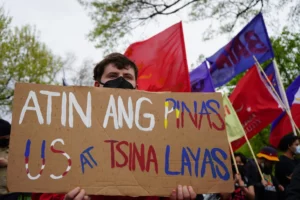
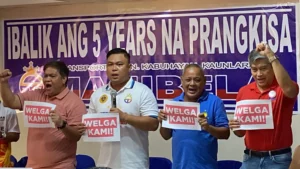
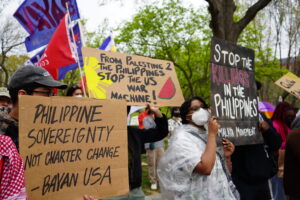

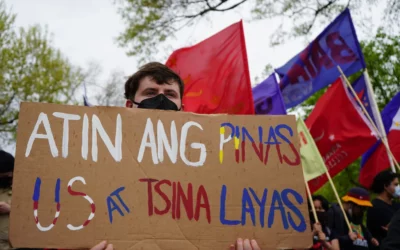
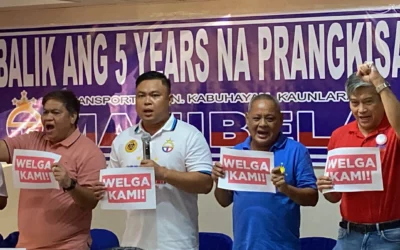
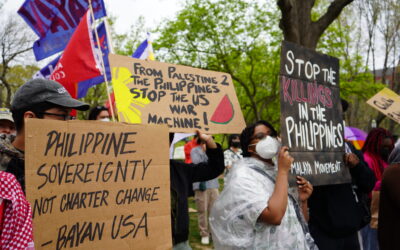
0 Comments